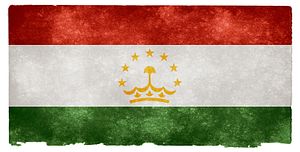Once again, it seems Russia has suggested that Tajikistan take a hard look at the Eurasian Economic Union. Russian First Deputy Prime Minister Igor Shuvalov told reporters in Moscow on April 20 that the Russian side had suggested observer status to their Tajik counterparts during a meeting of the Tajik-Russian commission for trade and economic cooperation.
“This status does not bear any political aspect, it will just promote increase in trade turnover and mutual penetration of the economies,” he said, noting that coordination on various customs control regulations and standards “leads to more free movement of commodities.”
“We are interested in the CIS member nations understanding what our EAEU partners and we are doing,” Shuvalov said.
At present, the Eurasian Economic Union (EEU or EAEU) counts Russia, Kazakhstan, Belarus, Armenia, and Kyrgyzstan as full members. The union was established on January 1, 2015, with Kyrgyzstan joining in August of that year. No other states have begun down the path of membership. In April 2017, Moldova was the first country granted observer status in the union, but EAEU enlargement conversations have heavily focused on Tajikistan.
In January, I reviewed an article in New Eastern Europe that sought to analyze the EAEU’s current status. In laying out the EAEU’s achievements, the author, Alexander Libman, noted that the union had managed to abolish internal constraints on labor mobility but “the biggest sources of emigration in Eurasia – Uzbekistan and Tajikistan – are outside of the EAEU and are not covered by its provisions.”
Tajikistan’s interests in joining the EAEU mirror those of Kyrgyzstan. The allure of easier access for migrant workers to both the Russian and Kazakh markets was the core selling point for Bishkek — which overtook Tajikistan, just barely, in recent years as Central Asia’s most remittance-dependent country.
According to a Pew analysis in 2016, Kyrgyzstan received nearly $2 billion in remittances, equivalent to 30.4 percent of the country’s GDP. Tajikistan’s remittances, about $1.9 billion, were equal to about 26.9 percent of GDP.
With Tajikistan’s economic growth projected to slow in the next few years, perhaps Dushanbe is taking another look at the EAEU. The January 2018 World Bank Global Economic Prospects report revised Tajikstan’s forecasted economic growth numbers downward — with 2018’s forecasted growth at 5 percent, down from 6.9 percent in 2016.
The European Bank for Reconstruction and Development said in its November 2017 Transition Report 2017-2018 that Tajikistan was expected to intensify its exploration of EAEU membership. The EBRD noted that in July 2017, “the head of the customs service in Tajikistan announced that an expert committee had completed its study of Tajikistan’s potential EEU accession.” While the results were not made public and negotiations were slow to progress, the EBRD suggested that the country’s banking crisis and “broader economy” could motivate Dushanbe to seek engagement with the EAEU.
The EBRD report cited July 2017, but this may have been a typographical error. In July 2016, I wrote about reports which appeared in Tajik media that Abdufattoh Ghoib (who was head of the customs service from 2015 until January 2018) had said the working group considering the issue of Tajik accession to the EAEU had submitted its report to the government.
At the time, Leonid Slutsky, a member of the Russian State Duma, was saying, “I think Dushanbe will declare its wish within the next year — it [Tajikistan] seeks after this more than any other CIS nation.”
Two years later and not only has Tajikistan not taken concrete steps toward membership but Russia has appeared to revise its ambitions from full Tajik participation to merely drawing Dushanbe in as an observer.

































